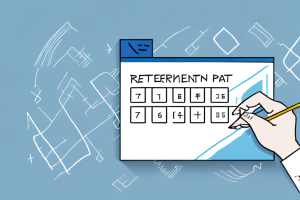Retirement is a significant milestone that requires careful planning and financial preparation. As you approach the age of 70, you may be wondering if it is possible to retire comfortably with $300,000 in savings. In this article, we will explore the various factors and considerations that will help you determine whether this amount is sufficient for your retirement needs.
Understanding Retirement Savings
Before delving into the specific aspects of retiring with $300,000, it is crucial to have a solid understanding of retirement savings. Retirement savings refer to the money that you have set aside to support yourself financially during retirement. This can include contributions to retirement accounts such as 401(k)s, Individual Retirement Accounts (IRAs), or other investment vehicles.
One of the primary purposes of retirement savings is to provide you with a steady stream of income during your non-working years. It is vital to accumulate enough savings to cover your living expenses, healthcare costs, and any other financial obligations you may have.
Retirement savings can be accumulated through various methods, including employer-sponsored retirement plans and personal savings. Employer-sponsored plans, such as 401(k)s, often offer the advantage of employer matching contributions, which can help boost your savings over time. Personal savings, on the other hand, can be built through regular contributions to individual retirement accounts (IRAs) or other investment vehicles.
When it comes to retirement savings, it’s important to start early and contribute consistently. The power of compounding can significantly impact the growth of your savings over time. By starting early and allowing your investments to grow, you can potentially achieve a larger nest egg for your retirement years.
The Importance of Planning for Retirement
Proper retirement planning is essential to ensure a financially secure future. This planning process involves assessing your financial situation, determining your retirement needs and expenses, and exploring different investment options and income sources.
One important aspect of retirement planning is estimating your retirement expenses. It is crucial to have a clear understanding of how much money you will need to cover your living expenses, healthcare costs, and any other financial obligations during your retirement years. By accurately estimating your expenses, you can set realistic savings goals and make informed decisions about your retirement investments.
Another key consideration in retirement planning is the potential impact of inflation. Over time, the cost of living tends to increase due to inflation. Therefore, it is important to account for inflation when planning for retirement. By factoring in inflation, you can ensure that your savings and investments will be able to keep up with the rising cost of living and maintain your desired standard of living throughout your retirement.
Evaluating Your Financial Situation
When considering retirement with $300,000 in savings, it is important to evaluate your overall financial situation. This includes taking into account your current income, expenses, debts, and other assets you may have. By gaining a clear understanding of your financial picture, you can determine how feasible it is to retire at 70 with $300,000.
Additionally, it is crucial to assess any potential future income sources such as Social Security benefits, pensions, or any other financial support you may receive during retirement. These additional sources of income can play a significant role in determining your overall retirement readiness.
Another important factor to consider when evaluating your financial situation is your expected lifespan. Life expectancy has been increasing over the years, and it is essential to estimate how long your retirement savings will need to last. This can help you determine if $300,000 will be sufficient to support you throughout your retirement years.
Furthermore, it is advisable to consult with a financial advisor or planner who can provide expert guidance on your retirement plans. They can help you analyze your financial situation, create a personalized retirement strategy, and make informed decisions about your savings and investments. Seeking professional advice can give you peace of mind and ensure that you are on track to meet your retirement goals.
Assessing Your Retirement Needs and Expenses
Determining your retirement needs and expenses is a critical step in retirement planning. This includes estimating your monthly living expenses, healthcare costs, and any other financial obligations you may have during retirement.
Retirement expenses can vary depending on your lifestyle choices, location, healthcare needs, and other personal factors. It is prudent to carefully analyze your anticipated expenses to ensure that your $300,000 savings will be sufficient to cover your needs for the duration of your retirement years.
Considering the Impact of Inflation on Retirement Savings
An important factor to consider when planning for retirement is the impact of inflation on your savings. Inflation refers to the gradual increase in the cost of goods and services over time. As prices rise, the purchasing power of your savings decreases.
When contemplating retiring with $300,000, it is crucial to consider the potential effects of inflation on your retirement savings. Inflation can erode the value of your savings, making it essential to invest your funds wisely to mitigate its impact.
Exploring Different Retirement Income Sources
Relying solely on your savings of $300,000 may not provide enough financial security during retirement. Exploring different retirement income sources such as Social Security benefits, pensions, or part-time work can supplement your savings and enhance your overall financial position during retirement.
It is essential to understand the eligibility criteria, rules, and potential benefits associated with these income sources to determine their impact on your retirement plan.
Maximizing Social Security Benefits for Retirement
For many individuals, Social Security benefits form a significant portion of their retirement income. To maximize your Social Security benefits, it is crucial to understand the strategies and options available to you. Factors such as delaying benefits, coordinating spousal benefits, and understanding the impact on taxation can significantly impact the amount of income you receive during retirement.
Investing Strategies to Grow Your Retirement Savings
Growing your retirement savings is a vital aspect of retirement planning. Investing your savings wisely can help your money grow over time, providing a more robust financial foundation during retirement.
When deciding to retire with $300,000, it becomes even more critical to implement effective investment strategies. Consider diversifying your portfolio, assessing risk tolerance, and seeking professional advice to optimize your investment returns and mitigate potential losses.
Understanding the Power of Compound Interest in Retirement Planning
Compound interest is a powerful financial concept that can significantly impact the growth of your retirement savings. With compound interest, you earn interest not only on your initial investment but also on the accumulated interest over time. This compounding effect allows your retirement savings to grow exponentially.
By understanding the role of compound interest and taking advantage of it, you can potentially enhance your $300,000 savings and improve your financial well-being during retirement.
Exploring Different Investment Options for Retirement Savings
When retiring with $300,000, it becomes crucial to explore various investment options to maximize the growth of your savings. These options can include stocks, bonds, mutual funds, real estate, or other asset classes.
Each investment option carries its own risks and potential rewards. It is vital to carefully evaluate and diversify your investments to align with your risk tolerance and financial goals.
The Role of Employer-Sponsored Retirement Plans in Building Savings
If you have been employed and were fortunate enough to have an employer-sponsored retirement plan such as a 401(k), it can significantly aid in building your retirement savings.
Contributing to your employer-sponsored retirement plan throughout your working years, along with any employer matches, can help grow your savings more quickly. It is essential to assess the contribution limits, investment options, and vesting schedules associated with your specific plan to make the most of this opportunity.
Strategies for Catching Up on Retirement Savings Later in Life
If you find yourself behind in saving for retirement, there are strategies you can employ to catch up. These strategies may include increasing your contributions, leveraging catch-up contribution limits, or exploring other investment vehicles to accelerate your savings growth.
By implementing these strategies and committing to a disciplined savings plan, it may be possible to accumulate sufficient funds for a comfortable retirement by age 70, even with $300,000 as a starting point.
Balancing Risk and Reward in Retirement Investments
One of the key considerations when retiring with $300,000 is finding the right balance between risk and reward in your investment portfolio. While taking on more significant risks can potentially yield higher returns, it also poses a higher likelihood of losses.
It is crucial to assess your risk tolerance and choose investments that align with your financial goals and comfort level. Achieving a balanced portfolio can help safeguard your savings while also aiming for growth.
The Importance of Diversification in a Retirement Portfolio
Diversification is an essential investment strategy, particularly when retirement planning. By diversifying your retirement portfolio, you spread your investments across different asset classes to reduce risk and increase the likelihood of positive returns.
When working with $300,000, diversification becomes even more critical to mitigate potential losses and help your savings last throughout your retirement years.
Managing Debt and Expenses to Reach Your Retirement Goals
Managing debt and expenses is crucial when working towards retirement goals. Paying off high-interest debts and minimizing unnecessary expenses can free up more funds to contribute towards retirement savings.
By adopting smart financial habits and living within your means, you can minimize the impact of debts and expenses on your retirement plan, improving your chances of retiring comfortably with $300,000.
Evaluating the Pros and Cons of Delaying Retirement to Build More Savings
For individuals with $300,000 in savings, delaying retirement can be a strategy to build more financial security for the future. By continuing to work and save, you can accumulate additional funds and potentially increase your Social Security benefits.
However, it is essential to weigh the advantages and disadvantages of delaying retirement, considering factors such as health, personal goals, and overall financial situation.
Tips for Living on a Fixed Income During Retirement
Living on a fixed income during retirement requires careful budgeting and planning. It is essential to assess your expected income from savings, Social Security, pensions, and other sources and create a realistic budget that aligns with your financial resources.
By adopting strategies such as tracking expenses, utilizing senior discounts, and making wise financial choices, you can optimize your $300,000 savings and enjoy a fulfilling retirement within your means.
Navigating Healthcare Costs and Insurance in Retirement
Healthcare costs can be a significant financial burden during retirement. When planning to retire with $300,000 in savings, it is crucial to consider the potential costs associated with medical care and insurance.
Exploring options such as Medicare, long-term care insurance, and supplemental health insurance can help navigate the complexities of healthcare and alleviate potential financial hardships.
Considering the Implications of Longevity on Retirement Planning
As life expectancy continues to increase, it is crucial to consider the implications of longevity on your retirement planning. Retirement savings may need to last longer than anticipated, requiring a more conservative approach and a focus on preserving your assets.
By factoring in the potential for a longer retirement, you can adjust your expectations and strategies to ensure your financial security throughout your golden years.
In conclusion, retiring comfortably at 70 with $300,000 in savings is indeed possible, but it requires careful planning, realistic expectations, and informed decision-making. Each individual’s financial situation is unique, and it is essential to assess your personal circumstances to determine if this amount of savings is sufficient for your retirement needs. Consulting with a financial advisor can provide the guidance and expertise needed to navigate this important milestone and ensure a fulfilling retirement.



